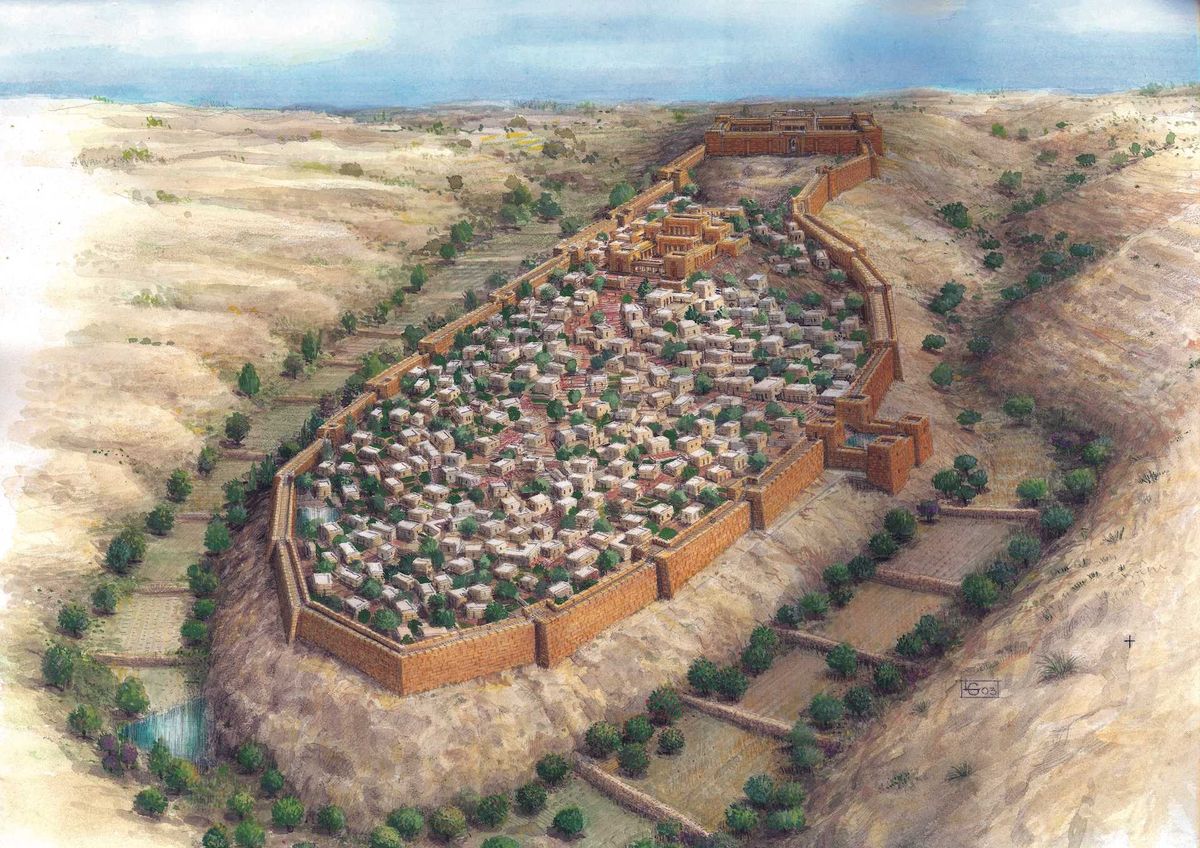Follow us on Google News (click on ☆)
The study of the origins of Jerusalem, at the intersection of archaeological sciences and religious texts, provides insight into how scientific discoveries can confirm or refute historical and religious narratives that have been rooted in human culture for millennia.

Archaeologists believe the "City of David" is the oldest part of Jerusalem. This illustration shows it in the ninth century BC, during the period of the First Temple.
Credit: Leonardo Gurevich, City of David Archives
A recent study published in the scientific journal PNAS reveals a precise timeline of Jerusalem, shedding light on major events such as its settlement, a major earthquake, and its destruction by the Babylonians. These findings, supported by carbon-14 dating, here corroborate certain biblical historical descriptions.
Elisabetta Boaretto, professor of archaeological sciences at the Weizmann Institute of Science in Israel, led this research which used carbon-14 isotope dating to refine the dates between 770 and 420 BC. This period was considered vague due to reduced solar activity affecting the isotope's production.
Researchers analyzed 103 samples of seeds and other remains, employing microarchaeological methods to refine the datings, confirmed by measurements of atmospheric carbon from tree growth rings from 624 to 572 BC.
This approach solidified the chronology around the Babylonian destruction in 586 BC and revealed that Jerusalem had been populated between the 12th and 10th centuries BC, experiencing expansion to the west in the 9th century BC.
The study also identified evidence of an earthquake in the mid-8th century BC, mentioned in the Bible, marked by a layer of collapsed stones and damaged building materials, followed by a period of reconstruction. The results indicate prolonged use of certain sites after this earthquake and before the Babylonian invasions, reflecting relative economic and political stability.
However, Israel Finkelstein, an archaeologist not involved in this study, has questioned the reliability of some of the analyzed samples. He specifically pointed out that only the samples from one of the five studied sites, along with a few isolated others, had sufficient reliability for precise dating. The other samples, according to him, provide only approximate dates, the earliest possible for the concerned layers.